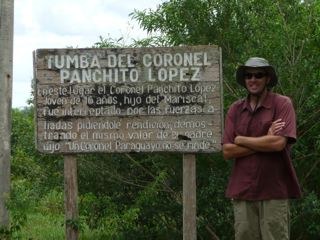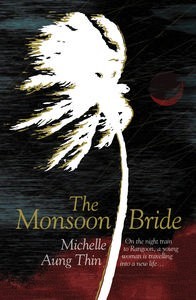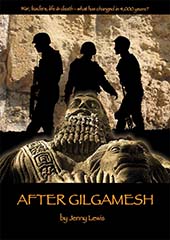Fiona McKean reviews “Speak Now: Australian Perspectives on Same-Sex Marriage”
Edited by Victor Marsh
ISBN 978-0-9807120-9-4
Reviewed by FIONA McKEAN
As Australia is currently poised to answer the question of whether it will say “I do” to same-sex marriage, it’s difficult to imagine a more topical publication than Speak Now, a collection of essays and creative non-fiction pieces on the theme of same-sex marriage. Since Speak Now was published in October 2011, the Queensland Parliament has passed legislation recognising same-sex civil unions—a compromise between marriage equality and lack of relationship recognition—and the first of these have been registered. Comedian Magda Szubanski has come out on national television for marriage equality, and the Australian Labor Party has changed its policy platform in favour of same-sex marriage. And two of the contributors to this volume, Elaine Crump and Sharon Dane, have dined with Prime Minister Julia Gillard at the Lodge to argue for marriage equality. Debate is intensifying, rather than diminishing. So what does Speak Now bring to the table?
Speak Now is a wide-ranging collection of 35 different essays, memoirs, and personal responses to same-sex marriage. As the content is truly eclectic—varying widely in stance, genre, and style—the entries are organised in alphabetical order by surname, rather than grouped thematically. This makes for something of a “lucky dip”. Michael Kirby’s foreword and Victor Marsh’s introduction provide an appropriate entrée, echoing as they do the most clearly recognisable division—between the more formal, academic and legal essays and informal personal accounts. Marsh’s introduction is particularly welcoming, and reassuring to any readers who might fear the presence of earnest, 90s-style oppression-speak in the pages that follow. After all, weddings are supposed to be fun!
The academic essays are uniformly well-researched, but vary in degree of accessibility. Wayne Morgan’s history of relationship law reform excels at the latter, and is logically structured and clearly written. He demonstrates how legal protection for all relationships in Australia has evolved over time, and how formalising same-sex unions builds on these previous reforms.
In “Christianity, Marriage, Love and Friendship”, Michael Carden provides a detailed historical analysis of marriage and marriage-like rituals, including adelphopoiesis, a formalised recognition of friendship. He examines the roles of patriarchy and capitalism in marriage before advocating a renaissance of friendship rituals, rather than adherence to a narrow construction of marriage.
Academic and activist Dennis Altman dryly questions whether gay people should rush to “buy into the myth of monogamous marriage, whose record is generally not inspiring” (5). Ryan Heath offers the confronting statistic that, on a global scale, “ten times as many countries imprison their citizens for homosexual activity than allow them to marry” (74). In an essay that blends personal experience with research, he uses such statistics to warn against apathy for those who question whether “enough” equality has been achieved, and invites personal involvement.
I can’t remember which Australian politician declared it was the personal stories of same-sex couples that finally altered his stance in favour of marriage equality, but I suspect he’s not alone. It’s in the unique stories of individuals—and the capacity for empathic connection they invoke—that potential for change exists. And it’s the personal accounts I connected to most strongly in this collection. To an extent, these were reminiscent of those in the seminal Word is Out: Stories of Some of our Lives. Decades have passed since its initial publication, but its power lay in the revelation of simple details of the everyday lives of lesbians and gay men. And it was the differences in these stories, rather than any monolithic representation of “gayness”, that enabled readers to identify with their narrators and demonstrated varied ways of living gay lives.
So, too, with Speak Now. The personal stories are narrated by same-sex partners, parents of same-sex children unable to marry, helping professionals and marriage celebrants, and vary as widely in tone and stance as the essays. The very title of Deb Wain’s contribution, “I Got Married, Some Can’t. That’s Not Fair” is both striking and succinct. She is similarly unsparing on religious objections to same-sex marriage:
There are a number of things that the bible says and there are a number of ways in which to quote the bible itself in rebuttal to these arguments. I’m not going to even bother doing this here for the simple reason that Australia has a secular government… The bible has no legitimate place in this argument. (236)
The tone of the personal recollections ranges from Deb Wain’s pithiness, to the sincere—Luke Gahan’s “The Ins and Outs of Marriage (and Divorce)”—to the slightly satirical, as in Tiffany Jones’s “Tying the K(NOT)!” Gahan retains an unwavering dedication to a romantic ideal of marriage, despite a same-sex divorce in his twenties. He speaks of the pressures he experienced in his marriage from both within and outside “the gay community”—from some of the latter, a lack of recognition and acceptance; from some of the former, pressure to accept infidelity and act as some sort of marriage movement martyr or role model. Gahan’s story explicates the reality beyond the fairytale, and debunks the notion that the fact a same-sex relationship may end invalidates formal recognition in the first place.
For me, the two outstanding pieces in this anthology are Donald Ritchie’s “Customs” and Michelle Dicinoski’s “How to Grow a Lawn”. Both are beautifully written accounts of marriages recognised in Canada, but not in the authors’ home country, Australia. Ritchie allows himself to hope that he may receive a positive response to his marriage from a Customs official, or at least recognition: “in that moment I think it may be different this time” (203). But this does not eventuate, and Ritchie observes “somewhere over the Pacific, at thirty-nine thousand feet, I lost a husband” (204). Similarly, Dicinoski retains hope despite the distinctly unneighbourly response of her neighbour, Bob, to news of her marriage. For these writers, gentle humour and controlled use of metaphor accomplish what browbeating never could.
Regardless of the diversity of their stances, none of the contributors seems to wholly oppose same-sex marriage. I found myself agreeing with Michael Kirby in his foreword (xxiv) and fellow reviewer David Allan that the collection might have benefited from the inclusion of some of these contrasting viewpoints. But readers may have been exposed to enough reductio ad absurdum arguments along the lines of “same-sex marriage will lead to people marrying their dogs” outside these pages to be relieved not to be meeting any more here within them.
According to the Speak Now blog, the collection has been criticised for the fact that “it doesn’t speak with one voice on the issue of marriage and that politicians could be ‘spooked’ by the proposal of polyamory expressed by some of the contributors”. But to me, this editorial risk-taking is one of the strengths of this collection. It exemplifies the principles of parity and inclusion that underline the push for marriage equality. To speak “with one voice” might be politically expedient, but it risks enforcing a new, albeit non-heterosexual, orthodoxy. The editor has chosen instead to embrace and celebrate the multi-faceted realities of people’s lives and heterogenous perspectives. To do otherwise would reinforce the misconception that the diversity within these pages somehow stands outside of—rather than is synecdochal of—human experience as a whole.
Because this collection is so eclectic—with variations in genre, exact topic, and approach—it would have benefited from an index. This is not a book to be read straight through. Rather it is one to dip into, put aside for rumination, and dip into again. As the personal pieces often introduce concepts expanded upon in the academic essays, an index would help to explicate these links. For example, Deb Wain’s assertion that marriage “as a concept and social construct … predates the Christian church” (236) could be cross-referenced to the essays expanding on this concept. For those interested in further reading, an index or select bibliography would also help to locate passing references to secondary sources in some of the essays.
The danger with a collection such as Speak Now is preaching to the choir—that it will primarily attract an audience already receptive to, and interested in, same-sex marriage. But the book’s diversity of voices prevents this. Victor Marsh’s admission of his own change of heart in his editorial introduction is not only disarming, it’s canny. By acknowledging his own shift in perspective, he opens up breathing space for readers to do the same.
Speak Now documents an array of different attitudes and approaches to same-sex marriage at a pivotal time in Australian political life. It will make a valuable contribution to queer historical scholarship in Australia. For the newly out or curious, it showcases some of the varied possibilities for living a queer life. Speak Now deserves a wide, enquiring readership. I hope it finds one.
You can access the accompanying blog for Speak Now at http://speaknowaustralia.blogspot.com.au/
Works Cited
Adair, Nancy. Word is Out: Stories of Some of our Lives. Delacorte Press, 1978.
Allan, David. Rev. of Speak Now: Australian Perspectives on Same-Sex Marriage. Ed. Victor Marsh. GayLawNet 20 November 2011. <http://www.gaylawnet.com/ezine/books/speak_now.htm>
“Wendell Rosevear Speaks Now”. Speak Now. http://speaknowaustralia.blogspot.com.au/2011/11/william-rosevear-speaks-now.html
FIONA McKEAN is a postgraduate student at The University of Queensland.










